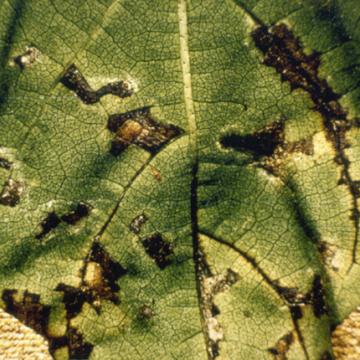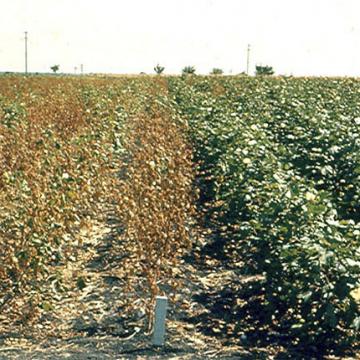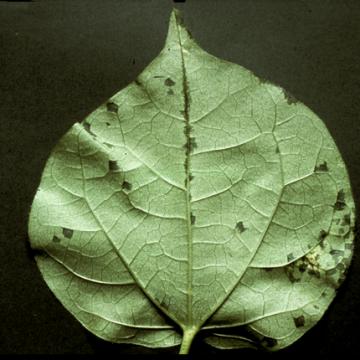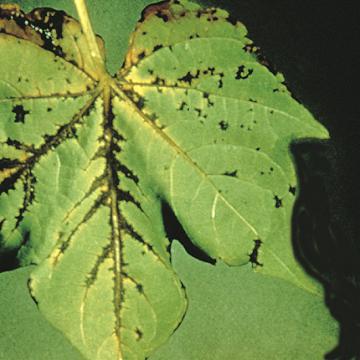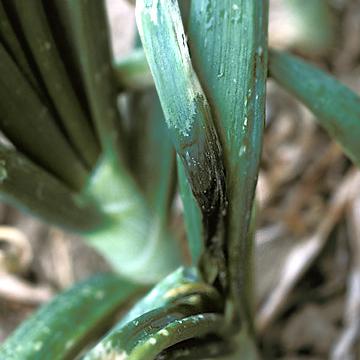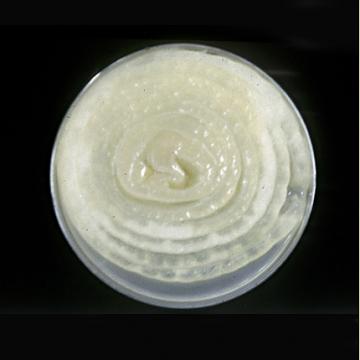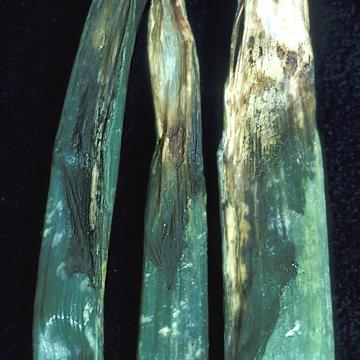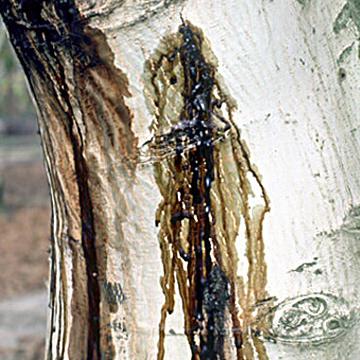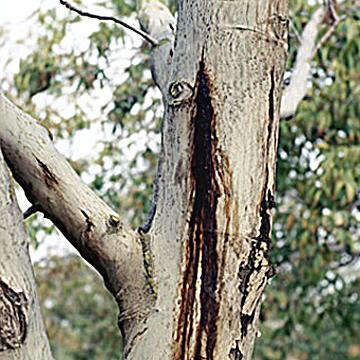DISEASE: Bacterial blight (Angular leaf spot)
HOST: Cotton
Leaf with advanced stage of blight.
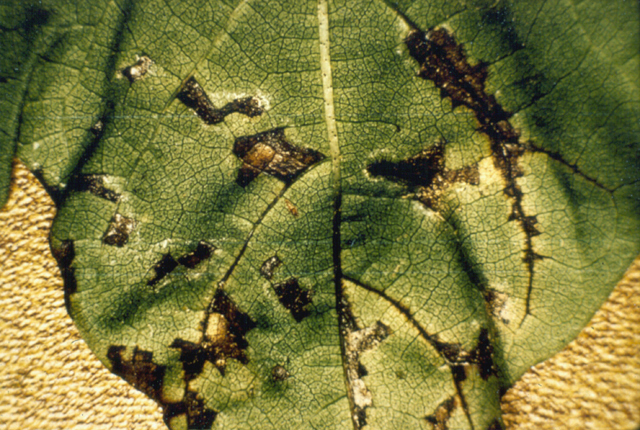
Bacterial blight (Angular leaf spot) | Cotton
DISEASE: Bacterial blight (Angular leaf spot)
HOST: Cotton (Gossypium barbadense)
PATHOGEN: Xanthomonas citri subsp. malvacearum
PATHOGEN SYNONYM: Xanthomonas campestris pv. malvacearum
SOURCE: M. Shurtleff
DISEASE: Bacterial blight (Angular leaf spot)
HOST: Cotton
Highly susceptible (left) and resistant (right) cotton cultivars. The black arm stage of the disease is the most serious and occurs when bacteria invade petioles and then stems.
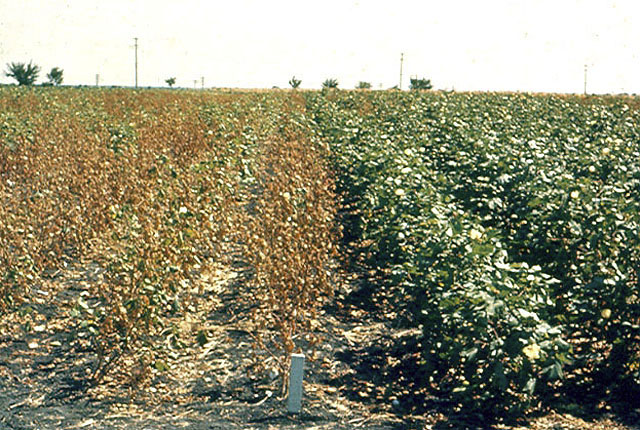
Bacterial blight (Angular leaf spot) | Cotton
DISEASE: Bacterial blight (Angular leaf spot)
HOST: Cotton (Gossypium barbadense)
PATHOGEN: Xanthomonas citri subsp. malvacearum
PATHOGEN SYNONYM: Xanthomonas campestris pv. malvacearum
SOURCE: APS
DISEASE: Bacterial blight (Angular leaf spot)
HOST: Cotton
Characteristic early symptoms are water-soaked leaf spots and water-soaking along veins.
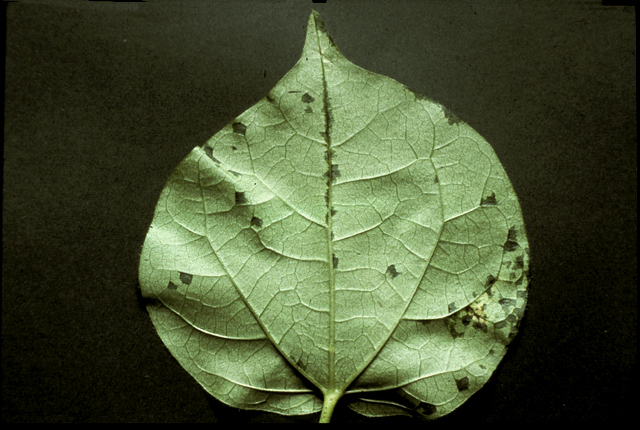
Bacterial blight (Angular leaf spot) | Cotton
DISEASE: Bacterial blight (Angular leaf spot)
HOST: Cotton (Gossypium barbadense)
PATHOGEN: Xanthomonas citri subsp. malvacearum
PATHOGEN SYNONYM: Xanthomonas campestris pv. malvacearum
SOURCE: A. Hayward
DISEASE: Bacterial blight (Angular leaf spot)
HOST: Cotton
Leaf with dark, angular leaf spots. Systemic invasion causes blackening of midribs.
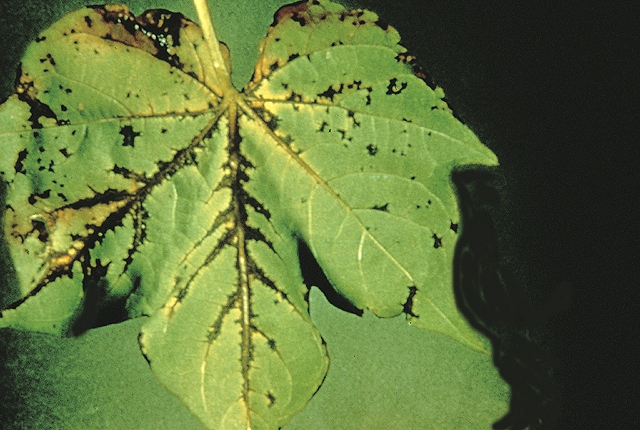
Bacterial blight (Angular leaf spot) | Cotton
DISEASE: Bacterial blight (Angular leaf spot)
HOST: Cotton (Gossypium barbadense)
PATHOGEN: Xanthomonas citri subsp. malvacearum
PATHOGEN SYNONYM: Xanthomonas campestris pv. malvacearum
SOURCE: APS
DISEASE: Bacterial flower stalk and leaf necrosis
HOST: Onion
Dark, rotted areas of stalk and leaves caused by systemic invasion of the pathogen.
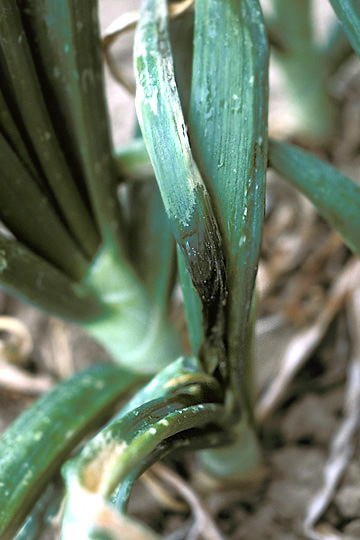
Bacterial flower stalk and leaf necrosis | Onion
DISEASE: Bacterial flower stalk and leaf necrosis
HOST: Onion (Allium cepa)
PATHOGEN: Pseudomonas marginalis pv. marginalis
SOURCE: S. Mohan
DISEASE: Bacterial flower stalk and leaf necrosis
HOST: Onion
Gray-brown rot of onion after inoculation. Disease starts as small, water-soaked lesions that later develop into slimy, gray-brown rot. The disease progresses downward from the stalk and may rot the entire bulb.
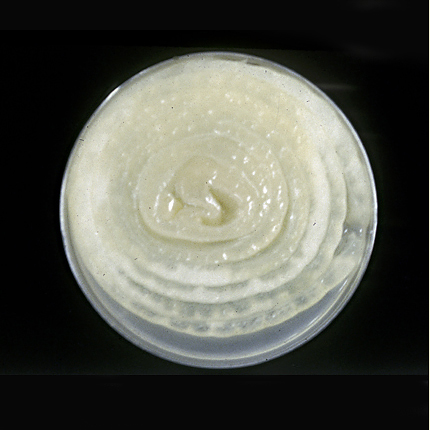
Bacterial flower stalk and leaf necrosis | Onion
DISEASE: Bacterial flower stalk and leaf necrosis
HOST: Onion (Allium cepa)
PATHOGEN: Pseudomonas marginalis pv. marginalis
SOURCE: R. Gitaitis
DISEASE: Bacterial flower stalk and leaf necrosis
HOST: Onion
Leaves with necrosis and rot. The common name for this disease is the same as those used for two other diseases. Also, another common name for this disease is bacterial soft rot.
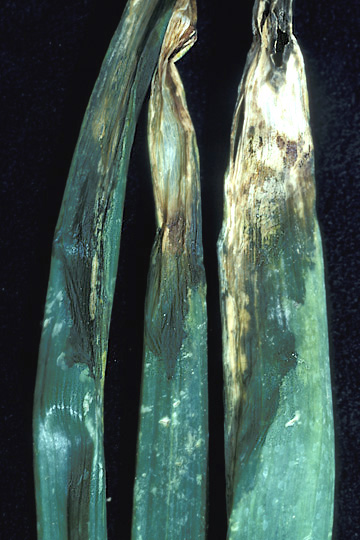
Bacterial flower stalk and leaf necrosis | Onion
DISEASE: Bacterial flower stalk and leaf necrosis
HOST: Onion (Allium cepa)
PATHOGEN: Pseudomonas marginalis pv. marginalis
SOURCE: S. Mohan
DISEASE: Deep bark canker
HOST: Walnut
Reddish brown exudate flowing from longitudinal cracks in the trunk. Cankers are deep extending into wood.
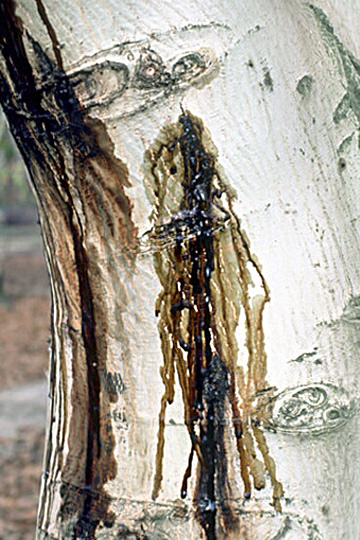
Deep bark canker | Walnut
DISEASE: Deep bark canker
HOST: Walnut (Juglans regia 'Hartley')
PATHOGEN: Brenneria rubrifaciens
PATHOGEN SYNONYM: Erwinia rubrifaciens
SOURCE: B. Teviotdale
DISEASE: Deep bark canker
HOST: Walnut
Reddish brown exudate flowing from cracks in trunk, a result of systemic invasion by the bacterium.
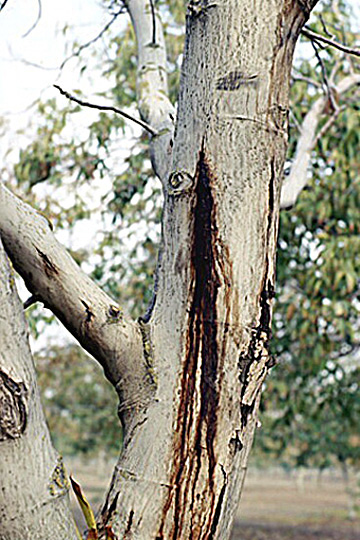
Deep bark canker | Walnut
DISEASE: Deep bark canker
HOST: Walnut (Juglans regia 'Hartley')
PATHOGEN: Brenneria rubrifaciens
PATHOGEN SYNONYM: Erwinia rubrifaciens
SOURCE: B. Teviotdale


